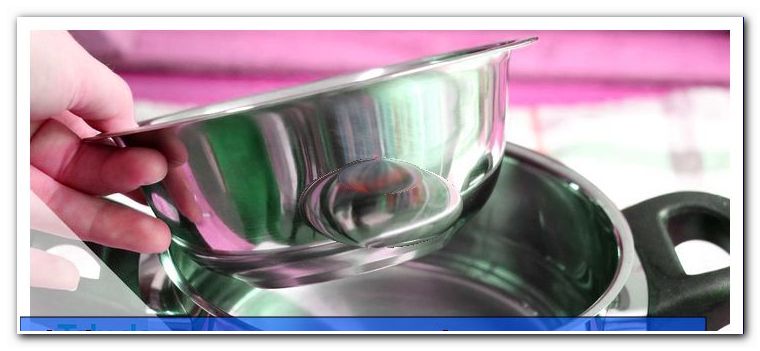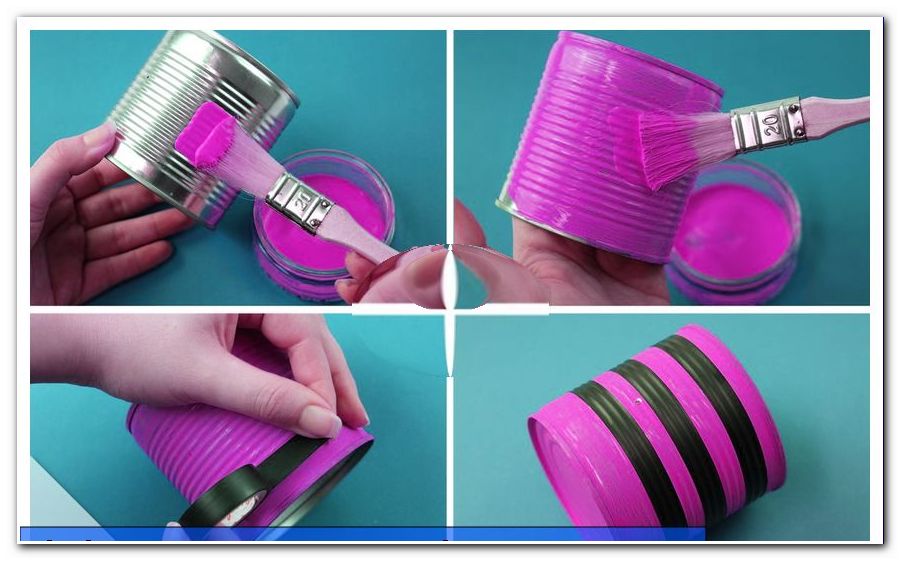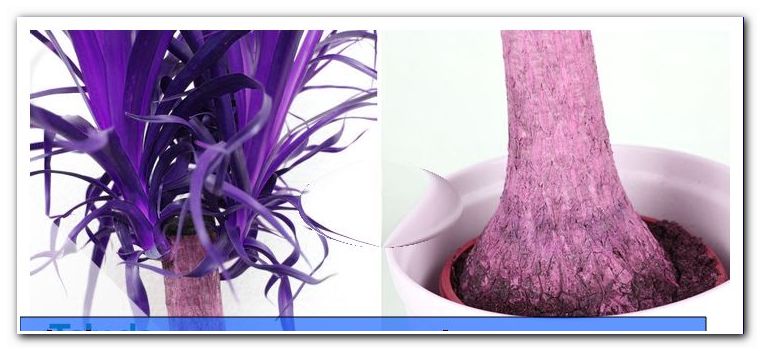OSB panels - difference OSB / 3 and OSB / 4

- In which classes are the installation panels divided "> Use of OSB / 3 and OSB / 4 panels
- Differences between OSB / 3 and OSB / 4 disks
- What costs should I expect?
- The decision: OSB / 3 or OSB / 4
- The conclusion: When did I use which class?
OSB panels are used in many areas of interior design and are characterized by the ease of installation. Another advantage is the high resistance to moisture, provided you choose the right class. Quickly arises when buying the question of which laying plates are suitable. Especially the difference between OSB / 3 and OSB / 4 is often a challenge. Find out which of the two variants for wet areas is the right choice.
Since the 90s, the OSB boards enjoy an ever-increasing popularity. They are mainly used in rough and interior construction. Possible applications are wall constructions, roof constructions and wall coverings. Many products are available with tongue and groove, which facilitates the attachment. Differences are mainly in the selected class, the thickness and the type of installation. Particularly practical are designs with tongue and groove, as they are clicked into each other and mounted with a few simple steps. Common strengths of the plates are between 12 and 25 millimeters.
In which classes are the installation panels divided?
The standard EN 300 differentiates between different classes, which determine not only the quality but also the price. The classification is based on the moisture resistance and the load capacity:
OSB / 1: These panels are suitable for use in the dry area. They are used in interior design and are also used for furniture, for example.
OSB / 2: The installation panels are used in the dry area like OSB / 1, but can be used for load-bearing areas
OSB / 3: The installation panels are suitable for damp areas. They were also developed for carrying loads.
OSB / 4: The plates have ideal properties for wet areas and are highly resilient.

Use of OSB / 3 and OSB / 4 panels
Class 3 is used for most work in the private sector. It is characterized by the relative moisture resistance.
OSB / 3 is suitable for:
- Cladding of walls, roof slopes and floors
- Construction of floors
- Planking of partitions
- concrete formwork
- Floor Renovation / Floor repair
- decorative tasks
- stage construction
OSB / 4 is suitable for:
- Ceiling skins in industrial construction
- in the case of larger spacing between the roofing of roofs
- Nail plate constructions

Differences between OSB / 3 and OSB / 4 disks
If you lay the OSB boards in damp rooms, then you have to choose between OSB / 3 and OSB / 4, as these two versions have a relative humidity resistance. However, class 4 plates are much more resilient, which is a big advantage. The disadvantage is the higher price. The price difference is around 10 percent. The difference is especially important for larger projects and therefore has to pay off. Let's say you are planning the cladding of several walls measuring 10 meters x 3 meters. Then you need 30 m² of installation panels for each wall. If the building material costs on average 5 euros, then the total cost per wall is 150 euros. A surcharge of 10 percent leads to a cost increase of 15 euros. If several walls are to be clad in a house, then there are significant additional costs.
What costs do I have to expect "> 
 The costs depend on several factors:
The costs depend on several factors:- class
- Strength
- Tongue and groove
- ground / unpolished
On average you have to expect the following expenses (data per m², thickness 12 millimeters)
- OSB / 3, tongue and groove, ground: 5.60 Euro
- OSB / 3, unpolished: 3, 15 Euro
- OSB / 3, ground: 5, 10 Euro
- OSB / 4, unpolished: 5, 74 Euro
- OSB / 4, tongue and groove: 6, 10 Euro
The decision: OSB / 3 or OSB / 4
A common case for using OSB / 4 is the supposed freedom from formaldehyde. However, this is a fallacy, as the class is not an indication of the additives. In order to obtain ecologically compatible products, you must deal with the products in individual cases and, if necessary, contact the manufacturer.

OSB / 3 is sufficient for most work in the home, but OSB / 4 can always be used as the quality is higher.
The difference between the two plates is mainly in the bending strength perpendicular to the plate plane. OSB / 4 sheets are made with a higher amount of glue. This results in about 33 percent higher flexural strength.
The higher bending strength is desired when roof or Deckenbeplankungen are exposed to particularly high loads.
OSB / 4 panels are suitable for large distances in the substructure.
The conclusion: When did I use which class? "  Class 3 and 4 installation panels are both suitable for damp areas. In general, class 3 is sufficient. Class 4 is always used when high bending strength is required or where large distances are planned in the substructure. If these two cases are not available, then the use of Class 4 is not necessary and generally does not lead to an improvement of the work results but only to an increase in costs. In case of doubt, a structural engineer can be consulted, which assesses the resulting burdens.
Class 3 and 4 installation panels are both suitable for damp areas. In general, class 3 is sufficient. Class 4 is always used when high bending strength is required or where large distances are planned in the substructure. If these two cases are not available, then the use of Class 4 is not necessary and generally does not lead to an improvement of the work results but only to an increase in costs. In case of doubt, a structural engineer can be consulted, which assesses the resulting burdens.
Tips for quick readers:
- OSB / 3 and OSB / 4 for humidity ranges
- OSB / 3 for load-bearing areas
- OSB / 4 is highly resilient
- in the private sector, the class 3 is usually sufficient
- Class 4 has a higher flexural strength
- Class 3 is around 10 percent cheaper than Class 4


 The costs depend on several factors:
The costs depend on several factors: Class 3 and 4 installation panels are both suitable for damp areas. In general, class 3 is sufficient. Class 4 is always used when high bending strength is required or where large distances are planned in the substructure. If these two cases are not available, then the use of Class 4 is not necessary and generally does not lead to an improvement of the work results but only to an increase in costs. In case of doubt, a structural engineer can be consulted, which assesses the resulting burdens.
Class 3 and 4 installation panels are both suitable for damp areas. In general, class 3 is sufficient. Class 4 is always used when high bending strength is required or where large distances are planned in the substructure. If these two cases are not available, then the use of Class 4 is not necessary and generally does not lead to an improvement of the work results but only to an increase in costs. In case of doubt, a structural engineer can be consulted, which assesses the resulting burdens.

